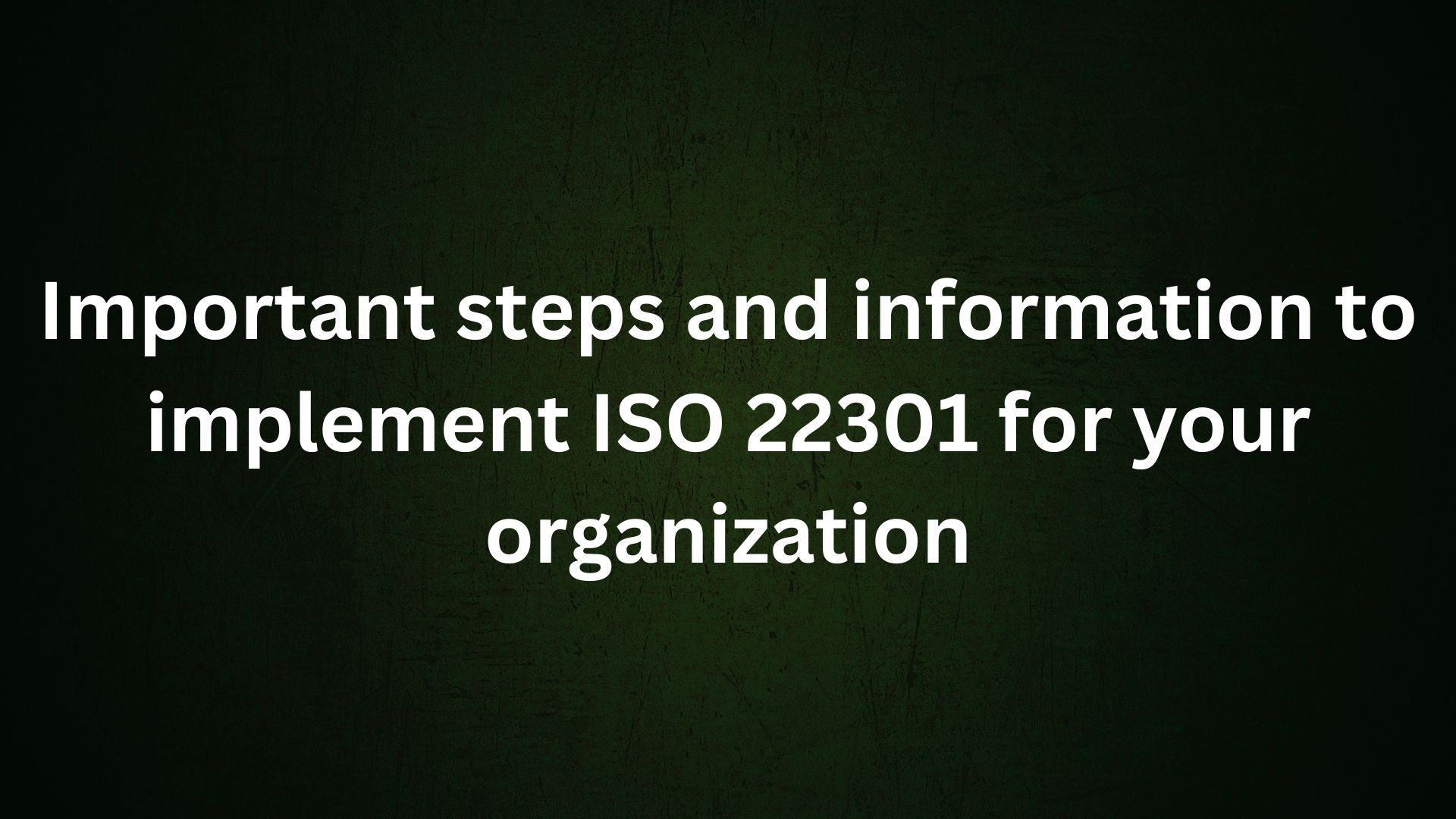Important steps and information to implement ISO 22301 for your organization
The international business standard, ISO 22301:2019, acts as a framework for preparation, response, and recovery with respect to business operations disrupted by an incident. Therefore, ISO 22301 certification is designed to help organizations prevent disruption to their business operations with minimal damage caused by a disruption, which minimises loss or damage.

Therefore, it is indispensable to understand the Business Continuity Management System before the execution process. By definition, the BCMS consists of policies as well as other procedures that any organization implements during a disruptive event and after so as to carry on its principal functions.
Key implementation steps for achieving 22301 certifications
Risks assessment
It will start by undertaking a thorough risk assessment for 22301. This would determine the nature and impact of risk on an organization’s operation. The essential principles are: Risk assessment; commitment from stakeholders, continual improvement; and the system approach for the management of business continuity.
Creating a strategy for business continuity
Once the risks have been defined, organizations need to develop a comprehensive business continuity strategy. BCMS objectives should be aligned with the strategic goals of an organization, roles, responsibilities, and timelines.
Conduct a Gap Analysis
A gap analysis helps identify the current state of your organization’s business continuity practices compared to the requirements of ISO 22301. The findings from the gap analysis will form the basis of the implementation plan.
Perform a Business Impact Analysis (BIA)
A BIA is the backbone of an effective BCMS, which involves identifying critical business functions and processes, assessing the impact of disruptions on these functions, and establishing Recovery Time Objectives (RTOs) and Recovery Point Objectives (RPOs).
Develop and Document Policies and Procedures
The documentation of one’s BCMS shall be thorough, according to ISO 22301. Key documents are the business continuity policy, incident response plans, recovery plans for critical functions, and roles and responsibilities for BCMS implementation. Documentation should be clear, concise, and accessible to relevant stakeholders.
Training and awareness programs for employees
Training and awareness programs for the employees in an organization are required to ensure proper implementation of the BCMS. These programs would educate employees regarding their roles and responsibilities in situations of disruptions and familiarise them with the processes of the BCMS. Frequent drills can strengthen such training while identifying the gaps in strategy.
Invite an Accredited Certification Body
ISO 22301 certification would require an outside audit by a third-party accreditation body. Usually, the audit process would take the following:
Stage 1 audit to test documentation and preparation, and Stage 2 audit to test the implementation and conformity to the standard.
In obtaining the ISO 22301 certification, there is full planning, dedication, and maintenance involved. Hence, following all these steps makes it possible to have a fully functional BCMS that will assure operations, defend assets, and guarantee long-term success. But certification is much more than simply being compliant- it is setting up a preparedness and resilience culture in any business in light of a fluid business environment.
Drop us an email [email protected]
Services Offered :- Riyadh, Dammam, Yanbu, Jeddah, Jubail, Hofuf
